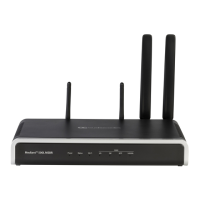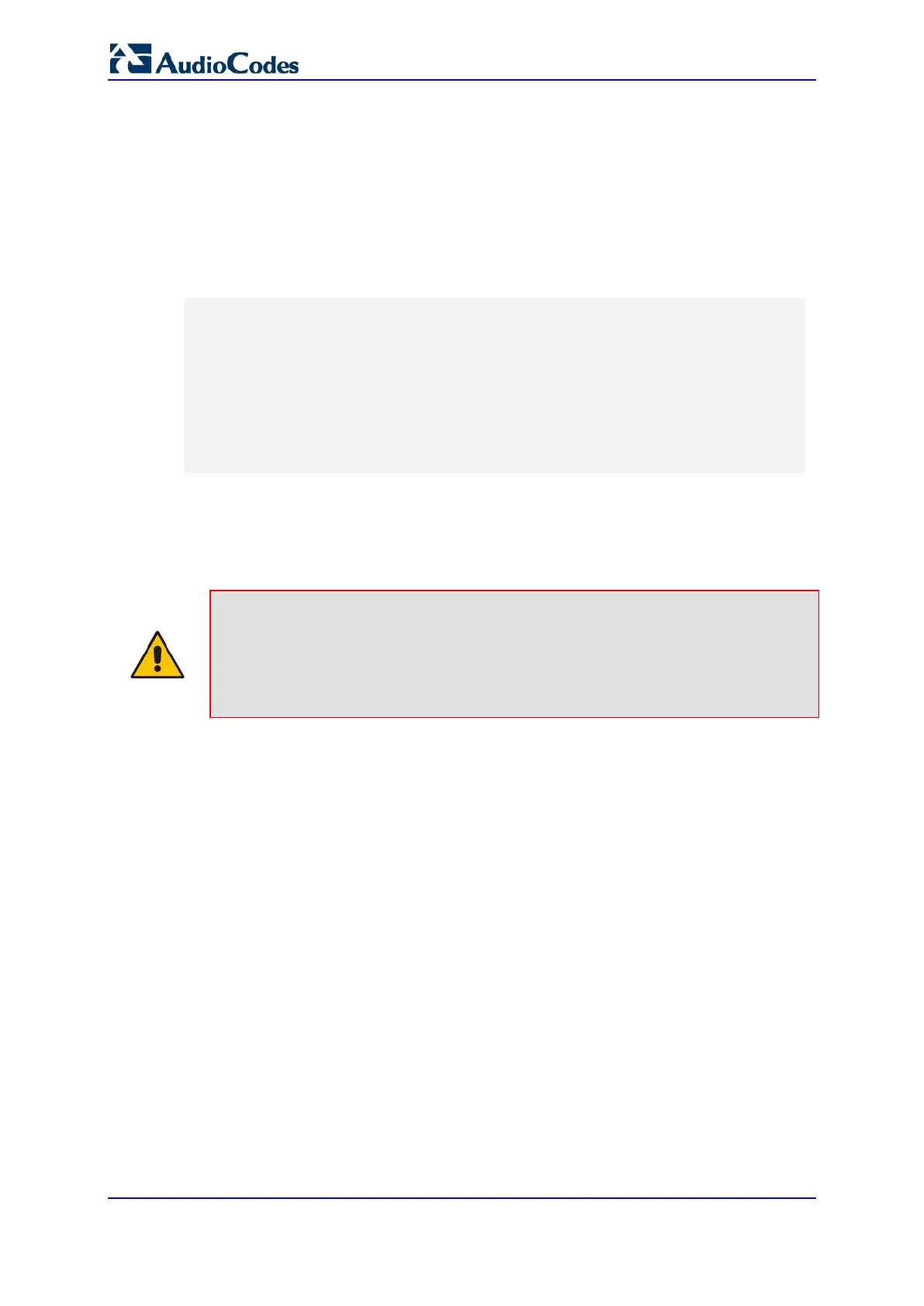User's Manual 194 Document #: LTRT-10466
Mediant 500L MSBR
of call capabilities is exchanged in the outgoing SDP. These capabilities include whether
VBD is supported and associated RTP payload types ('gpmd' SDP attribute), supported
codecs, and packetization periods for all codec payload types ('ptime' SDP attribute). After
this initial negotiation, no Re-INVITE messages are necessary as both endpoints are
synchronized in terms of the other side's capabilities. If negotiation fails (i.e., no match was
achieved for any of the transport capabilities), fallback to existing logic occurs (according to
the parameter IsFaxUsed).
Below is an example of media descriptions of an SDP indicating support for V.152. In the
example, V.152 implementation is supported (using the dynamic payload type 96 and
G.711 u-law as the VBD codec) as well as the voice codecs G.711 μ-law and G.729.
v=0
o=- 0 0 IN IPV4 <IPAdressA>
s=-
t=0 0
p=+1
c=IN IP4 <IPAddressA
m=audio <udpPort A> RTP/AVP 18 0
a=ptime:10
a=rtpmap:96 PCMU/8000
a=gpmd: 96 vbd=yes
Instead of using VBD transport mode, the V.152 implementation can use alternative relay
fax transport methods (e.g., fax relay over IP using T.38). The preferred V.152 transport
method is indicated by the SDP ‘pmft’ attribute. Omission of this attribute in the SDP
content means that VBD mode is the preferred transport mechanism for voice-band data.
To configure T.38 mode, use the CodersGroup parameter.
Note: You can also configure the device to handle G.711 coders received in INVITE
SDP offers as VBD coders, using the HandleG711asVBD parameter. For example, if
the device is configured with G.729 and G.711 VBD coders and it receives an INVITE
with an SDP offer containing G.729 and “regular” G.711 coders, it sends an SDP
answer containing G.729 and G.711 VBD coders, allowing subsequent bypass
(passthrough) sessions if fax / modem signals are detected during the call.
17.2.7 Fax Transmission behind NAT
The device supports transmission from fax machines (connected to the device) located
inside (behind) a Network Address Translation (NAT). Generally, the firewall blocks T.38
(and other) packets received from the WAN, unless the device behind the NAT sends at
least one IP packet from the LAN to the WAN through the firewall. If the firewall blocks T.38
packets sent from the termination IP fax, the fax fails.
To overcome this, the device sends No-Op (“no-signal”) packets to open a pinhole in the
NAT for the answering fax machine. The originating fax does not wait for an answer, but
immediately starts sending T.38 packets to the terminating fax machine upon receipt of a
re-INVITE with T.38 only in the SDP, or T.38 and audio media in the SDP. This feature is
configured using the T38FaxSessionImmediateStart parameter. The No-Op packets are
enabled using the NoOpEnable and NoOpInterval parameters.

